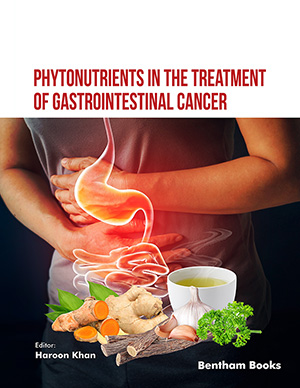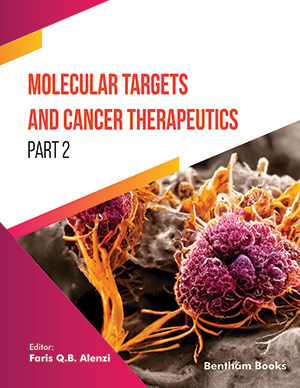Abstract
Positron-emission-tomography (PET) using the radiopharmaceutical 18F-fluorodeoxyglucose (FDG) has become an established and validated molecular imaging modality for characterization of the inflammatory activity of atherosclerotic plaque. In the latest years, new innovative radiopharmaceuticals and applications have emerged, providing specific information on atherosclerotic plaque biology, particularly focused on inflammatory processes. To review and highlight recent evidence on the role of PET for atherosclerosis imaging using emerging radiotracers. A comprehensive computer literature search of PubMed/MEDLINE was carried out to find relevant published articles concerning the usefulness of nuclear hybrid imaging in atherosclerosis imaging using 18F-- sodium fluoride PET, CXCR4-targeted PET, and amyloid-β-targeted PET. Atherosclerosis imaging with PET using emerging, specific tracers holds promise in improving our understanding of the pathophysiologic processes that underlie plaque progression and adverse cardiovascular events. There is increasing, high-quality evidence on the usefulness of 18F-sodium fluoride PET and – to a lesser extent – CXCR4-targeted PET, whereas amyloid-β-targeted PET is still in its infancy. F-sodium fluoride PET, CXCR4-targeted PET and amyloid-β-targeted PET may be used to obtain molecular information on different aspects of plaque biology. Further work is required to improve the technical aspects of these imaging techniques and to elucidate their ability to predict adverse cardiac events prospectively.
Keywords: Atherosclerosis, plaque, positron-emission tomography, PET/CT, CXCR4, sodium fluoride, amyloid.
[http://dx.doi.org/10.1016/j.jacc.2007.05.024] [PMID: 17719477]
[http://dx.doi.org/10.1016/j.jacc.2013.04.066] [PMID: 23727083]
[http://dx.doi.org/10.1016/j.atherosclerosis.2015.03.039] [PMID: 25913664]
[http://dx.doi.org/10.1016/j.jacc.2006.05.076] [PMID: 17084256]
[http://dx.doi.org/10.1007/s00018-015-1876-4] [PMID: 25746430]
[http://dx.doi.org/10.1161/ATVBAHA.107.161174] [PMID: 18566299]
[http://dx.doi.org/10.3389/fnagi.2019.00056] [PMID: 30930767]
[http://dx.doi.org/10.1007/s00259-019-04603-1] [PMID: 31773235]
[http://dx.doi.org/10.2967/jnumed.117.196485] [PMID: 28775206]
[http://dx.doi.org/10.1038/nrneurol.2017.129] [PMID: 28984315]
[http://dx.doi.org/10.1007/s12350-013-9829-5] [PMID: 24307262]
[http://dx.doi.org/10.2967/jnumed.118.217885] [PMID: 30213848]
[http://dx.doi.org/10.1007/s00259-019-04437-x] [PMID: 31385011]
[http://dx.doi.org/10.2967/jnumed.118.217877] [PMID: 30442755]
[http://dx.doi.org/10.2967/jnumed.115.162990] [PMID: 26471691]
[http://dx.doi.org/10.1088/1361-6560/aa97c8] [PMID: 29240557]
[http://dx.doi.org/10.1038/nm.1898] [PMID: 19122657]
[http://dx.doi.org/10.1161/CIRCULATIONAHA.107.743872] [PMID: 18165355]
[PMID: 24966838]
[http://dx.doi.org/10.1161/CIRCULATIONAHA.117.027646] [PMID: 28450349]
[http://dx.doi.org/10.1161/ATVBAHA.113.301655] [PMID: 24436368]
[http://dx.doi.org/10.1002/jlb.66.1.135] [PMID: 10411001]
[http://dx.doi.org/10.1016/j.it.2007.05.007] [PMID: 17560169]
[http://dx.doi.org/10.1016/j.cca.2019.05.022] [PMID: 31145896]
[http://dx.doi.org/10.15252/emmm.201404698] [PMID: 25736399]
[http://dx.doi.org/10.3389/fonc.2019.00770] [PMID: 31475113]
[http://dx.doi.org/10.7150/thno.31032] [PMID: 31281504]
[http://dx.doi.org/10.1097/RLU.0000000000001590] [PMID: 28195912]
[http://dx.doi.org/10.2967/jnumed.117.193037] [PMID: 28450555]
[http://dx.doi.org/10.18383/j.tom.2016.00130] [PMID: 30042959]
[http://dx.doi.org/10.1016/j.jcmg.2015.09.008] [PMID: 26577262]
[http://dx.doi.org/10.1016/j.jcmg.2018.01.001] [PMID: 29454781]
[http://dx.doi.org/10.2967/jnumed.116.179663] [PMID: 27789718]
[http://dx.doi.org/10.1161/STROKEAHA.118.021070] [PMID: 30002148]
[http://dx.doi.org/10.2967/jnumed.119.234484] [PMID: 31653710]
[http://dx.doi.org/10.1007/s00259-019-04322-7] [PMID: 31004184]
[http://dx.doi.org/10.1007/s00259-017-3831-0] [PMID: 28932900]
[http://dx.doi.org/10.1007/s00259-018-4076-2] [PMID: 29967943]
[http://dx.doi.org/10.1007/s12350-019-01929-z] [PMID: 31659697]
[http://dx.doi.org/10.1016/j.eururo.2018.11.016] [PMID: 30473431]
[http://dx.doi.org/10.1007/s00259-017-3669-5] [PMID: 28280856]
[http://dx.doi.org/10.1097/RLU.0000000000001589] [PMID: 28221194]
[http://dx.doi.org/10.1056/NEJMoa1607427] [PMID: 28076709]
[http://dx.doi.org/10.1007/s00330-016-4308-4] [PMID: 27011373]
[http://dx.doi.org/10.7150/thno.30357] [PMID: 30613284]
[http://dx.doi.org/10.18632/oncotarget.12402] [PMID: 27705948]
[http://dx.doi.org/10.1016/j.jacc.2013.08.1624] [PMID: 24076295]
[http://dx.doi.org/10.1016/j.jacc.2018.04.035] [PMID: 29957221]
[http://dx.doi.org/10.1111/j.1538-7836.2008.03086.x] [PMID: 18647221]
[http://dx.doi.org/10.5482/HAMO-14-10-0054] [PMID: 25586789]
[http://dx.doi.org/10.1182/blood-2008-09-177287] [PMID: 19264920]
[http://dx.doi.org/10.1161/ATVBAHA.113.301783] [PMID: 23723373]
[http://dx.doi.org/10.1093/cvr/cvs115] [PMID: 22406749]
[http://dx.doi.org/10.1016/j.jbiomech.2019.03.005] [PMID: 30904335]
[http://dx.doi.org/10.1186/1471-2261-12-7] [PMID: 22336469]
[http://dx.doi.org/10.1073/pnas.0606310103] [PMID: 17003118]
[http://dx.doi.org/10.1073/pnas.1932554100] [PMID: 14500910]
[http://dx.doi.org/10.1007/s004280050289] [PMID: 9870690]
[http://dx.doi.org/10.1038/5928] [PMID: 9988260]
[http://dx.doi.org/10.1038/srep40253] [PMID: 28091516]
[PMID: 19775205]
[http://dx.doi.org/10.1097/MOL.0b013e328363d298] [PMID: 24005215]
[http://dx.doi.org/10.1161/CIRCULATIONAHA.107.732867] [PMID: 18040026]
[http://dx.doi.org/10.1161/CIRCRESAHA.113.301036] [PMID: 23616621]
[http://dx.doi.org/10.2967/jnumed.110.077933] [PMID: 21078790]
[http://dx.doi.org/10.2967/jnumed.110.082263] [PMID: 21051652]
[http://dx.doi.org/10.2967/jnumed.110.076471] [PMID: 20484438]
[http://dx.doi.org/10.2967/jnumed.110.081208] [PMID: 21321276]
[http://dx.doi.org/10.1007/s00198-014-2839-6] [PMID: 25124219]
[http://dx.doi.org/10.2967/jnumed.111.087452] [PMID: 21680686]
[http://dx.doi.org/10.1038/ncomms8495] [PMID: 26151378]
[http://dx.doi.org/10.1016/j.jstrokecerebrovasdis.2018.02.011] [PMID: 29555399]
[http://dx.doi.org/10.1161/CIRCIMAGING.118.007835] [PMID: 30642216]
[http://dx.doi.org/10.1097/MNM.0000000000000748] [PMID: 28902094]
[PMID: 21761011]
[http://dx.doi.org/10.1097/MNM.0000000000000734] [PMID: 28877084]
[http://dx.doi.org/10.1007/s12350-013-9680-8] [PMID: 23588862]
[http://dx.doi.org/10.1016/j.jacc.2011.12.037] [PMID: 22516444]
[http://dx.doi.org/10.4329/wjr.v8.i1.82] [PMID: 26834946]
[http://dx.doi.org/10.1007/s10554-013-0342-3] [PMID: 24318613]
[http://dx.doi.org/10.1016/S0140-6736(13)61754-7] [PMID: 24224999]
[http://dx.doi.org/10.1161/CIRCIMAGING.116.004976] [PMID: 28292859]
[http://dx.doi.org/10.1007/s12350-017-0918-8] [PMID: 28500539]
[http://dx.doi.org/10.1161/CIRCIMAGING.117.006704] [PMID: 29133478]
[http://dx.doi.org/10.1007/s00259-018-4122-0] [PMID: 30171271]
[http://dx.doi.org/10.1007/s12350-018-1325-5] [PMID: 29943142]
[http://dx.doi.org/10.1161/JAHA.118.010224] [PMID: 30371290]
[http://dx.doi.org/10.2967/jnumed.116.182790] [PMID: 28232606]
[http://dx.doi.org/10.1007/s00259-017-3680-x] [PMID: 28349280]
[http://dx.doi.org/10.1016/S0140-6736(04)15900-X] [PMID: 15064035]
[http://dx.doi.org/10.1016/j.bbadis.2011.07.004] [PMID: 21784149]
[http://dx.doi.org/10.1172/JCI23610] [PMID: 16127459]
[http://dx.doi.org/10.1038/380168a0] [PMID: 8600393]
[http://dx.doi.org/10.1016/j.nbd.2008.12.007] [PMID: 19162185]
[http://dx.doi.org/10.1007/s00259-017-3651-2] [PMID: 28321471]
[http://dx.doi.org/10.3390/molecules24061072] [PMID: 30893771]
[http://dx.doi.org/10.1016/j.jacc.2014.12.035] [PMID: 25744007]
[http://dx.doi.org/10.7326/M17-1540] [PMID: 29799975]
[http://dx.doi.org/10.1016/j.jacc.2016.08.073] [PMID: 27908343]
[http://dx.doi.org/10.1161/STROKEAHA.119.027220] [PMID: 31597548]
[http://dx.doi.org/10.1056/NEJMc1714635] [PMID: 29322754]


























